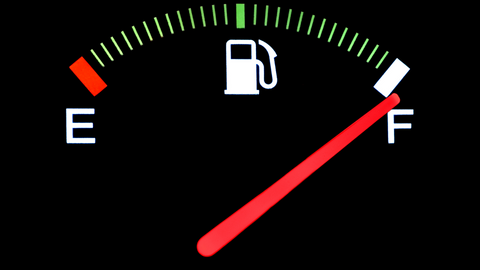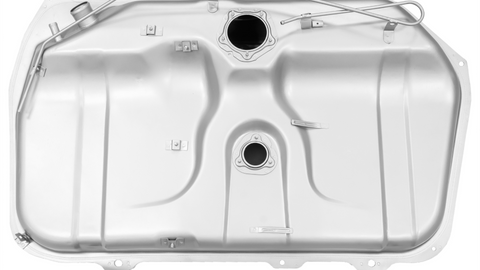Whether planning a road trip across the country or camping in remote locations, having a spare fuel tank can ensure your vehicle has enough fuel to get you to your destination and back safely. While external spare tanks may seem simple, choosing the wrong model can limit your vehicle's performance and reduce fuel economy. To select the ideal spare fuel tank for a long-distance self-driving tour, consider factors like mounting options, tank capacity, fuel transfer components, and compatibility with your vehicle's electrical system. With many variables in play, researching your options and choosing the right spare fuel tank is essential for a trouble-free experience away from fuel stations and mechanics.
Capacity
One of the most important considerations when choosing a spare fuel tank is its capacity. You'll want to select a tank that can hold enough fuel to get you through the sections of your trip where fuel stations will be scarce. Most spare fuel tanks range from 20 to 100 gallons, with 20 to 30 gallons suitable for lighter-duty rigs and trucks and 30 to 100 gallons appropriate for heavier-duty trucks, SUVs and RVs. Larger capacities provide a longer range between refuelling but have drawbacks like added weight, higher costs and additional installation complexity. Choose the highest-capacity spare tank that matches your vehicle's towing capacity while balancing performance needs and budget.

Material
The material used to construct the spare fuel tank can impact its durability, weight and cost. Polyethylene tanks are the most common and affordable option, offering lightweight and corrosion resistance but less impact resistance. Aluminium tanks are more impact-resistant, heavier duty and more expensive. Stainless steel tanks are the heaviest-duty option, able to withstand the highest impact forces and corrosion, but also the most costly to purchase and install. The material you choose should match your intended usage - occasional highway driving needs a polyethylene tank, while off-road rock crawling demands a stainless steel unit. Aluminium tanks offer a good balance of durability, weight and value for most applications.
Shape and Size
The shape and dimensions of spare fuel tanks also factor into your choice. Rectangular tanks are the most affordable and easiest to install, though they may limit cargo space more than other options. Round tanks conform better to open areas in a vehicle's undercarriage but can be harder to mount securely. Some manufacturers offer custom-shaped tanks in popular vehicle models to fit into odd spaces. As for size, choose a tank that fits as close as possible to your vehicle's body to minimize wind drag. Avoid tanks that stick out from the vehicle's contours, creating more drag and lowering fuel economy. Compact yet high-capacity tanks tend to perform best, so research your options carefully.

Brand and Quality
When selecting a spare fuel tank, the brand and the manufacturer's reputation for quality are important factors. Some prominent brands to consider include Labwork, Optima, Ranch, and Retro Fuel. These companies have been making high-quality spare fuel tanks for years and offer an array of sizes, materials, and fitting options. Look through consumer reviews online to gauge customer satisfaction with the brands you're considering. Additionally, check each manufacturer's warranty coverage - typically one to three years - to indicate their confidence in their product's quality and durability. Avoid no-name brands with little information available, as these often represent the low end of the market in terms of build quality and reliability. Stick with established brands for the best spare fuel tank.
Cost
Cost is another primary consideration when choosing a spare fuel tank. Prices vary widely depending on the tank's capacity, material, brand and included components. Polyethylene tanks generally cost between $100 and $300, aluminium tanks between $300 and $700, and stainless steel tanks between $700 and well over $1,000. Larger capacities and higher-end materials command higher prices. Components like fuel gauges, vents, caps, and lines also increase expenses. Set a budget that balances your needs with your finances. Cheaper tanks may represent a better value if used infrequently, while hardcore adventurers may benefit from investing in a premium unit. With some research, you can find a high-quality spare fuel tank that fits within your budget while meeting your specific application requirements.
Installation
The installation requirements of different spare fuel tanks also factor into your decision. Some tanks have simple bolt-on designs requiring no welding or fabricating, while others involve more complex modifications. Some important considerations include:
- Mounting type: Some tanks use frame mounts, while others require body mounts. Choose one that matches your vehicle.
- Transfer systems - Some tanks include pre-plumbed fuel lines and pumps, while others require fabricating the system. Easier is better.
- Electrical integration: Some high-end tanks integrate with your vehicle's computer and gauge cluster. Most require manual fuel level monitoring.
- Vent routing: This is important for safety, but methods vary by tank design.
Ensure your tank has a well-described, feasible installation process for a DIY mechanic or professional installer. Tanks with complex, vehicle-specific installations generally cost more but have a cleaner appearance once completed. Weigh ease of installation against budget, needed driving range and aesthetic priorities. Installation by an experienced shop can also help ensure a long-lasting setup.
Considering capacity, material, shape, brand, cost, and installation factors will help you select the optimal spare fuel tank for a trouble-free, self-driving trip. Do your research, compare multiple options and choose a high-quality unit that satisfies your needs and budget.
Maintenance
Proper maintenance is crucial to ensure your spare fuel tank functions reliably for years. Follow these best practices:
- Inspect mounts and brackets regularly for loose bolts or signs of wear. Tighten or replace as needed.
- Check fuel lines for cracks, abrasions or leaks. Replace damaged lines promptly.
- Keep the inside of the tank clean to avoid debris clogging filters or causing pump issues.
- Change fuel every 2-3 years to prevent degradation and sediment buildup.
- Add a fuel stabilizer to gasoline when storing for extended periods.
- Lubricate mechanical components like pumps and gauges per the manufacturer's schedule.
- Exercise components periodically. Run the pump and open valves to keep them moving freely.
- Flush the system and replace filters during major service intervals.
- Remove the tank periodically to inspect the interior for corrosion. Repair or recoat as needed.
With proper care, a quality spare fuel tank can provide you with years of trouble-free service and security for long travels. Following the manufacturer's maintenance schedule and heeding these general recommendations will help maximize the life and performance of your investment.
Conclusion
In conclusion, choosing the right spare fuel tank for a long-distance self-driving tour requires considering many factors like capacity, material, size, brand, cost, installation and maintenance. Researching and comparing multiple options will help you select a high-quality, reliable unit that fits your vehicle and meets your range, budget and style priorities. Once installed, following the manufacturer's maintenance schedule and general best practices will help the tank last for years of trouble-free operation. A spare fuel tank can bring invaluable peace of mind when hitting the road for an epic adventure. Choosing wisely and caring for your tank properly will power you through countless miles and memories for many road trips to come. Happy driving!

